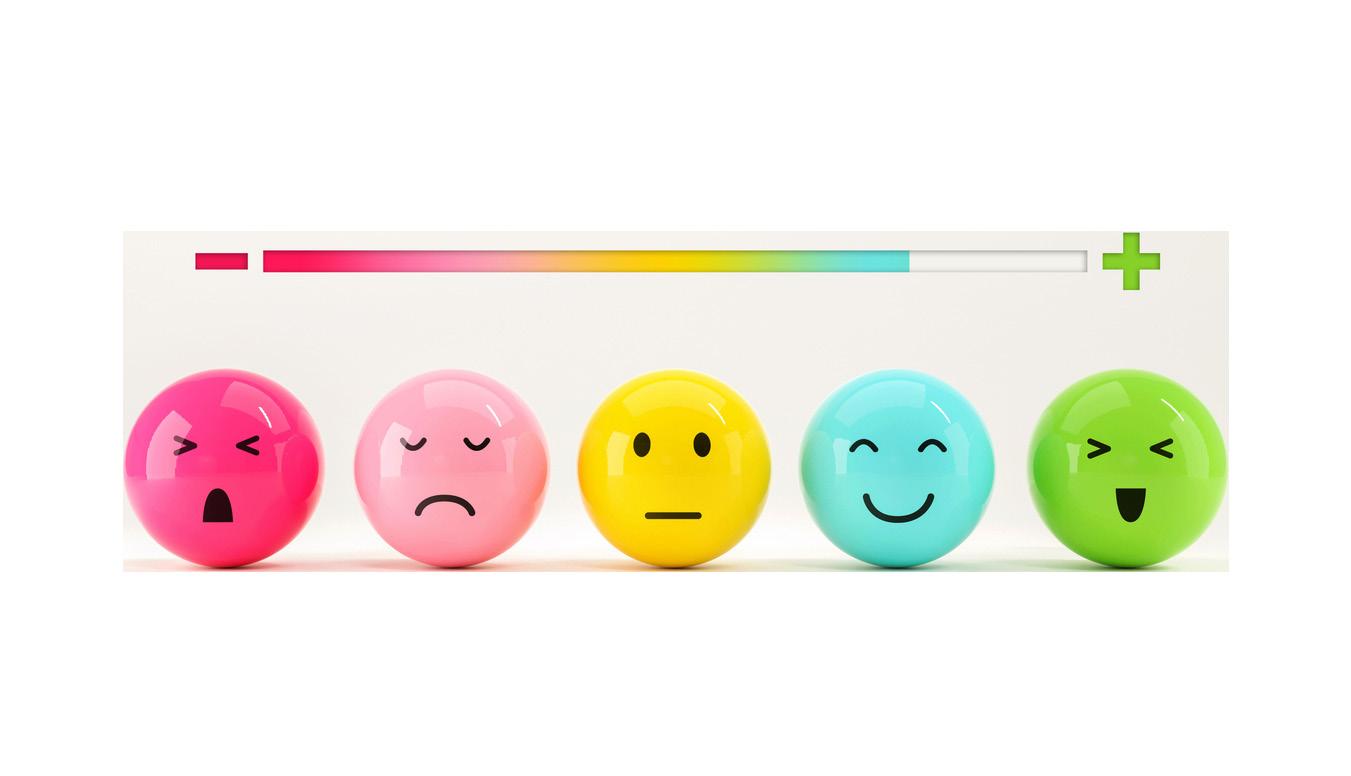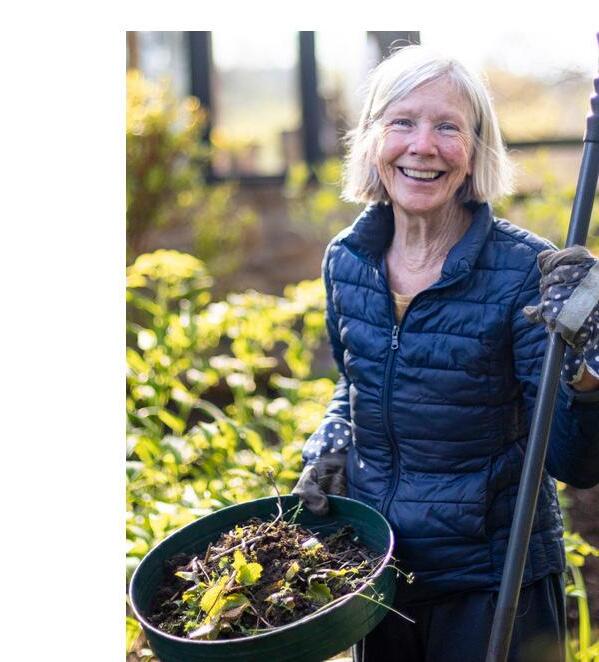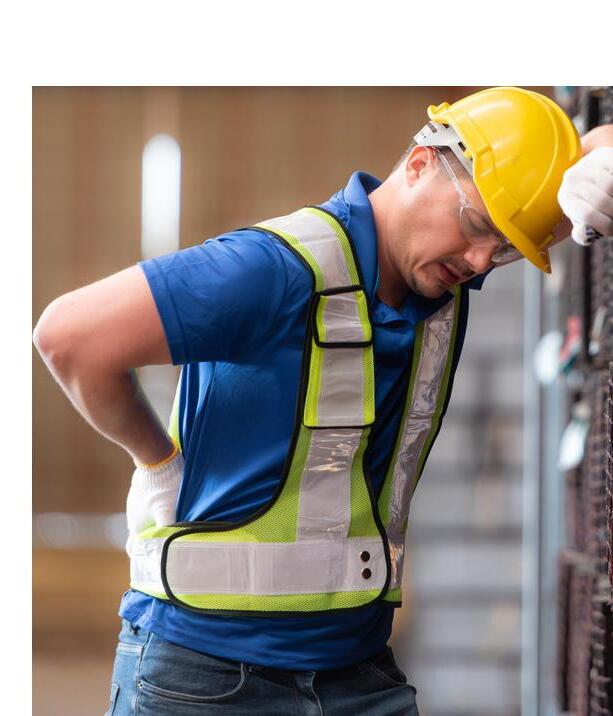Staying fit as you age, back pain
WORLD KINDNESS DAY


In celebration of World Kindness Day, Dr Sophie Reck reflects on how small acts of kindness can create a ripple effect, improving both our wellbeing and connection with others. Dr Emma Hirons offers invaluable advice on staying fit as you age, with tips on maintaining strength and mobility throughout life. Plus, Thea Boyd, Physiotherapist, sheds light on back pain in men, emphasising why it’s a concern that shouldn’t be ignored and sharing practical ways to address it.
World Kindness Day
Written by Dr Sophie Reck, Occupational Health Physician
In honour of World Kindness Day this article will explore what kindness is, why it is a powerful tool and consider ideas to promote kindness in the workplace.
The awareness day was introduced by the World Kindness Movement, a global coalition of kindness organisations in 1998 and now falls annually on 13th November. The day is dedicated to promoting acts of kindness with the aim of instilling kindness as a common human value, spreading goodwill and creating a more peaceful world.
While an act of kindness may at times feel like a small gesture, the power of kindness is selfpropagating, leading to better health, stronger communities, and enhanced workplace performance, retention and happiness.


Kindness is defined as ‘the quality of being friendly, generous and considerate’

WHAT IS KINDNESS?
According to the Oxford Learning Dictionary, kindness is defined as ‘the quality of being friendly, generous and considerate’.
In Graham Allcott’s book, Kind, The quiet power of kindness at work, he describes the difference between being kind and being nice. At times, these two qualities can be at logger heads; to be kind to someone may mean having an uncomfortable conversation whereas being nice may involve keeping quiet about what a person may really need to hear to avoid conflict.
The impact of kindness is quiet and gentle, like the ripples of a river. It could even go unnoticed within people’s hectic schedules and may not be listed in key attributes for a leader, however, like the quiet steady flow of a river that could move an armada, a culture of kindness can have spectacular results for the productivity of the workplace.
In today’s busy, fast paced world, business is a threat to kindness. When feeling stressed, time pressured and unable to be kind to oneself, it becomes exceedingly difficult to extend kindness to others, and to create the space needed to really listen, be curious and understand people’s needs. This might even lead to the opposite (meanness) or incivility.
A further barrier to kindness comes from fear that a kind act will be taken the wrong way. For example, concern that a gesture intended to be kind may not be wanted by the recipient or worry that kindness may be misinterpreted as weakness. The opposite is likely to be true here; kindness often requires emotional intelligence skills. It requires strength and the courage to be clear, open and transparent when having difficult conversations with others, whilst being empathetic at the same time.
The science
Regular acts of kindness to others can have a positive effect on your own health and wellbeing as well as the recipients’. There is some evidence supporting an associated reduction in symptoms of depression and anxiety, and related biological changes.
David Hamilton describes in his book, The Five Side Effects of Kindness, how being kind helps to release serotonin, oxytocin and endorphins, the so-called ‘feel-good chemicals’ which help to reduce stress, promote happiness, increase optimism and improve physical health. In turn, these chemicals can help lower cortisol levels, which can improve blood pressure, reduce pain, boost energy levels and enhance immune system functioning. Additionally, randomised control trials published in Diabetes Care have shown that selfkindness can improve the management of diabetes.
On a social level, kindness strengthens relationships, and helps to build a sense


Kindness in the workplace is proven to promote collaboration, honesty, creativity and productivity

THE IMPACT OF KINDNESS IN THE WORKPLACE
Kind acts are universal, they traverse culture, religion or language. The ripple effect refers to how an act of kindness can spread beyond the giver and receiver. For example, the effect also impacts witnesses of the kind act, enhancing their positivity and acting as a catalyst for their own kind acts which perpetually recreates the loop, resulting in kinder cultures and communities.
Many will be familiar with the phrase ‘dog eat dog’, implying that to succeed one must do whatever it takes, even if this is harmful to other people. The media and popular fiction often portray successful leaders as those who live by this philosophy, including in business. In a ‘survival of the fittest’ culture, kindness may be considered a weakness, where ‘only the strong survive’.
While the ripple effect is true for kindness, rudeness or incivility has been shown to have a domino effect, lowering performance and reducing creativity. As Dr Chris Turner, A&E Consultant and co-founder of Civility Saves Lives has shown, in a healthcare setting, it can cost lives.
However by creating psychological safety, kindness in the workplace is proven to promote collaboration, honesty, creativity and productivity. There is evidence that kindness improves employee retention, in addition to promoting a healthier workforce, which in turn can reduce stress, sickness and absenteeism: an investment in kindness pays. A global analytical company found that high levels of employee engagement within the Ritz-Carlton correlated with positive customer experiences. This has been attributed to their kind workplace culture, which includes trusting relationships. A kind workplace culture can create better customer service, improve customer experience and help maintain customer loyalty.

Inspiration for kindness in the workplace
f Be kind to yourself
We are more likely to manage kind feelings towards others if we feel them for ourselves. Self-kindness promotes individual wellbeing, creating space to feel and act kindly towards others. Talking kindly to yourself, practising moments of selfcare, taking a minute to slow down and reflect on how you are feeling, practising gratitude with a focus on finding the positives and celebrating the learnings from mistakes are all helpful to promote self-kindness.
f Start with a smile
Mother Teresa said ‘Peace begins with a smile’. Smiling releases endorphins and helps to reduce stress, promoting wellbeing. A smile provides a sign for happiness that is understood widely on a global scale. It is proven to increase trust, diffuse tension and is an invitation to connect. A smile is contagious - when someone smiles at you, it is instinctive to smile back, so sharing your smile not only promotes your own wellbeing but automatically causes that ripple effect with positive impact on those around you.
f Create a culture of recognition
Invite employees and clients to feedback, sharing experiences of kindness in the workplace. Be the spotlight on acts celebrating creativity, diversity and building a culture of appreciation.

f Send a thank you
Recognise a small moment or huge deed which had an impact on you. A thoughtful expression of gratitude will not only brighten the recipient’s day but encourage them to continue their kind acts.
f Create a kindness challenge
Such as completing a kindness bingo card with activities like ‘make a colleague a cuppa’, ‘open the door for someone’ or ‘be a lunch break buddy’.
f Organise a charitable activity such as collecting warm clothing for the homeless, fundraising or offer teams a kindness budget to allow them to arrange their own kind event or donation to a personally meaningful charity.
What individual or organisational random acts of kindness can you participate in?
Whatever you choose to do – at the end of your day, take a moment to reflect and ask yourself or your team:
f Was the team more productive?
f Did your day go better?
f Have you seen the ripple effect or been impacted by someone paying it forward?
f Can you think of simple ways to incorporate kindness into your day, every

Staying Fit as You Age
Written by Dr Emma Hirons, Occupational Health Physician
We all know that exercise is good for us – you may be thinking ‘tell me something I don’t know’. But what’s different about exercise as we get older?
The health benefits of exercise are extensive, from reducing the risk of heart disease, type 2 diabetes and some common cancers, to maintaining your mental health. But did you know that it can also reduce the risk of dementia by up to 30% and the risk of hip fracture in older people by up to 68%?
We should all aim to do some type of physical activity every day


HOW DO OUR BODIES CHANGE AS WE AGE?
The muscles in our body help to maintain strength and joint stability. Muscle mass peaks by the mid-30s before declining. This is a natural part of aging called sarcopenia. The process speeds up after the age of 65 in women and from 70 years for men. It may be accelerated in people with chronic health conditions or poor nutrition. If we lose too much muscle, we are at risk of becoming increasingly frail which can lead to falls. However, sarcopenia can be slowed by maintaining an active lifestyle, allowing us to maintain mobility and independence in later life.
Our bones are also affected by ageing, particularly for women after the menopause. They become less dense, leading to conditions like osteoporosis. This makes the bones more brittle and susceptible to fractures. Maintaining muscle strength helps to reduce the risk of falls and subsequent fractures.
Other common age-related changes include reduced vision and hearing. This may affect the type of activity that we feel comfortable doing, such as running in the dark or on uneven ground. As we get older, more of us will live with a long-term health condition, another factor affecting confidence to exercise.
Losing independence is a common worry for people as they age. We all want to carry on doing the things we enjoy and that are important to us for as long as possible. Whether this is keeping up with the grandkids, staying in work or travelling in retirement, exercise is an effective way to help you achieve your goals.
We all want to carry on doing the things we enjoy and that are important to us for as long as possible



WHAT EXERCISE SHOULD I BE DOING?
In general, the advice for older people is the same as any other adult. We should all aim to do some type of physical activity every day, but even once to twice per week can reduce the risk of heart disease and stroke. The main difference for older people is the emphasis on strengthbased exercise.
The NHS advises that those over the age of 65 should:
f Be physically active every day, even if it is light activity such as housework. Time spent sitting down should be kept to a minimum.
f Do 150 minutes of moderate exercise per week – during moderate activity you should be able to talk, but not sing. Activities include brisk walking, lawn mowing and dancing.
f Alternatively, do 75 minutes of vigorous exercise per week – this is activity where it is hard to talk, including running, walking upstairs and football. Most moderate activities can become vigorous if the intensity is increased.
f Do strengthening exercises twice per week.
Strengthening exercises include any activity that requires the muscles to contract to lift a heavy object against gravity. Weightlifting may be the first thing that comes to mind, but even walking with heavy shopping bags counts. Other types of strength training are body weight exercises such as press ups, squats and yoga, or exercises with resistance bands.
If you’re already meeting the NHS recommendations for aerobic exercise – good for you! Just consider if you are focussing enough on strength and balance. Studies have shown that only 40% of us incorporate this sort of exercise into our routines. There can be some overlap between strength and cardio-based exercise, but not always. You can add strength training onto the end of your workout or choose to do it on a different day.

I’m so busy
HOW DO I FIND TIME TO EXERCISE?
Many older adults juggle work and caring responsibilities – for elderly relatives, grandchildren or both. The thought of having to add exercise into an already packed day may feel like too much.
Let’s think about it another way – how much time do you spend scrolling on your phone or watching TV? Can you swap that for some activity instead? Exercise can also improve your energy levels and make you sleep better, making it easier to deal with everyday stress. However, you should avoid exercising just before you sleep.
If you can’t fit in 30 minutes of exercise in one go, try breaking it into shorter intervals instead. For example, wake up with 10 minutes of yoga in the morning, take a 10 minute walk outside at lunch and finish up with a 10 minute video home workout. That’s 30 minutes of exercise without having to step into a gym or carve out more time in your schedule.
Incorporating movement into your normal day is another way to increase your activity levels – if you wear a smart watch, see how many minutes of exercise you clock up when you try some of the following suggestions:
f Take the stairs when you can
f Leave the car at home and walk or cycle where you can
f Do squats or march on the spot when waiting for the kettle or during TV advert breaks
f Dance to music while doing housework
f Engage in outdoor activities like gardening
f Carry heavy shopping bags.



WHAT IF I REALLY HATE EXERCISE?
You are not alone – Sport England surveys indicate that around 25% of UK adults in 2024 did less than 30 minutes of activity a week. There are lots of reasons why we might avoid exercise – perhaps you had a bad experience in school PE lessons or feel too self-conscious to step into the gym? In my case, I was always last at sports day and rubbish at traditional school sports.
We all know the benefits of exercise, but translating this knowledge into change is often where the challenge lies, particularly if exercise already has negative connotations for you. The best exercise is the activity you are going to do and the one you enjoy – it is much more likely to become a habit.
The best exercise is the activity you are going to do and the one you enjoy
MONEY’S TIGHT – WHAT ARE MY OPTIONS?
Access to a gym or swimming pool may feel like a luxury that you cannot afford at the moment. If these are activities you enjoy, some local councils offer free or discounted gym and swim passes. If you have space at home, you could also consider buying some weights or equipment. You can usually pick up affordable weights from a local sports retailer or second hand online.
However, there are lots of activities that can be done at no cost. We’ve mentioned a few options already – including building movement into normal activities and going for walks. The NHS resources are free – Couch to 5k, Couch to Fitness and some other brief videos. YouTube has a whole host of exercise videos online which do not require subscription and are suitable to be done at home with no equipment.
WHAT IF I ALREADY HAVE A LONG-TERM HEALTH CONDITION?
People with long term health conditions often worry that exercise may make their condition worse. However, the benefits of physical activity far outweigh the risks. Everyone has their own starting point –the key is finding something that you are comfortable doing. Your specialist or GP will be able to help you if you’re not sure where to start.
If you are already exercising with a longterm health condition, keep going. You should stop and seek medical review if you experience significant worsening of symptoms including any of the following:
f Significant shortness of breath
f New or worsening chest pain or requirement for GTN spray
f Sudden onset palpitations
f Dizziness
f Reduced exercise capacity
f Sudden change in vision.
Final thoughts from Dr Emma Hirons
Exercise should be inclusive, regardless of your age. Hopefully this article has given some insight into the importance of staying active as we age and how to achieve this. By keeping in mind these four take home messages, you’re giving yourself a good chance of keeping fit into older age:
f Try to move more – any physical activity is better than none
f Make it part of your routine – focus on what is possible and set realistic goals
f Keep it fun – do what you enjoy and it will become a habit
f Don’t forget your strengthening exercises.

No Mo Excuses
Written by Thea Boyd, Physiotherapist
WHEN TO TAKE BACK PAIN SERIOUSLY THIS MOVEMBER
Movember is more than a moustache, it’s a movement which ignites conversations about men’s health. This ranges from encouraging men to discuss mental wellbeing to raising awareness of prostate and testicular cancer, and the importance recognising early warning signs even in areas you might not expect, like your back.
As a Physiotherapist, I want to educate you and emphasise that it is important to consider the wider implications of back pain and recognise symptoms that may prompt immediate assessment.
It is important to consider the wider implications of back pain
Prostate cancer will affect one in six men during their lifetime and is the most common cancer in men in the UK, while testicular cancer is the most common cancer in men aged 15 – 49. Both cancers can spread to the spine and with around 1 in 6 testicular cancer cases developing metastases (when cancer spreads beyond the place where it started to other areas of your body) with the spine being a common site, early recognition is paramount.
Our role is to support everyone in managing their pain safely, confidently and effectively, while never overlooking the signs that matter most. It is our role to get people the right help at the right time to achieve positive outcomes.

TREATING BACK PAIN
Most cases of back pain will usually respond to conservative management, which may include spinal mobility exercises, staying active and selfmanagement techniques. Whilst imaging does have its place for diagnostics, especially when investigating for a possible fracture, sinister pathology or for an individual who may require surgical intervention, it is rarely needed in primary care and may often mislead rather than support a treatment plan.
Medications have a limited role and may provide initial benefits. For example, short courses of anti-inflammatory medication may be considered after careful risk assessment, however, routine prescriptions or passive treatments are not recommended. Research suggests strong pain relief such as opioids should not be used for chronic low back pain or chronic sciatica. Instead, a holistic approach may be considered more advantageous, whereby movement, function and psychologically informed care are promoted, with medication playing only a minor role.

Red flags to watch out for
NEUROLOGICAL SYMPTOMS
Possible cauda equina syndrome, a rare emergency where nerves at the base of the spine are compressed:
f Saddle or genital numbness
f New bladder or bowel dysfunction
f Recent sexual dysfunction in men (difficulty achieving an erection or ejaculation)
f Rapidly worsening leg symptoms
f If you notice any of these, seek immediate medical attention at A&E.
SINISTER PATHOLOGY
Possible signs of serious underlying disease:
f Constant pain
f Night pain
f Unexplained weight loss
f History of cancer or new cancer (especially prostate, testicular, breast or lung)
f Unremitting pain not relieved by rest
f Pain not responding to usual care (particularly if over the age of 50–60).
These symptoms do not necessarily mean something serious, but they should never be ignored. They warrant prompt medical assessment.


What can help me with my back pain?
f Know your normal
Most back pain improves within 6-12 weeks when managed with movement and exercise.
f Keep moving
Staying active is one of the most effective treatments for most types of low back pain. Exercises such as walking, cycling, swimming, Pilates, yoga or structured gym programmes can improve strength, flexibility and confidence in movement.
f Manual therapy
Hands-on techniques such as spinal manipulation, mobilisation or soft tissue therapy may be useful in managing back pain when used in conjunction with a broader treatment programme that may include exercise and psychological support.
f Psychological therapies
Back pain is not solely a physical issue. Mental health challenges, such as stress, anxiety and depression can intensify the perception of pain. Therapies such as cognitive-behavioural therapy (CBT), mindfulness and other approaches can help individuals adapt to their symptoms, overcome fear of movement, improve sleep, and work towards restoring function. Campaigns like Movember show the power of men starting conversations – sharing your story, symptoms or simply checking in with a friend can make a real difference.
f Check your posture
Long periods of sitting, especially in a slouched position, can aggravate symptoms. Take regular breaks and positional changes to break up your sitting time.
f Don’t ignore the ‘odd stuff’ If your pain wakes you at night, spreads into your legs, or comes with changes in weight, appetite or fatigue - get an assessment.
f Connect the dots
In men, prostate or testicular problems can sometimes present as back pain.
In men, prostate or testicular problems can sometimes present as back pain




Health Your
RESOURCES
f Just One Thing with Michael Mosley | BBC Sounds
f Ripple - Kindness and good deeds will come back to you | Daniel Yam
f How to Bring Kindness to Work | Graham Allcott
f Volunteering is Associated with Delayed Mortality in Older People | Alex H. S. Harris & Carl E. Thoresen
f How The Ritz-Carlton Manages the Mystique | Gallup
f Kind. The Quiet Power of Kindness at Work | Graham Allcott
f The five side effects of kindness | Dr Hamilton
f Kindness Matters | American Diabetes Association
f Health matters: getting every adult active every day | GOV.UK
f How can strength training build healthier bodies as we age? | National Institute on Aging
f Benefits outweigh the risks | British Journal of Sports Medicine
f Britons worry about discussing loss of independence | Age UK
f Physical activity guidelines for older adults | NHS
f Image: The truth about…TV experiments | Just Practicing
f Bridging the gap between strengthspan and lifespan | British Journal of Sports Medicine
f Get running with Couch to 5K | NHS
f Record numbers playing sport and taking part in physical activity | Sport England
f Prostate cancer statistics | Cancer Research UK
f Men’s health insights: testicular cancer | Movember
f Testicular cancer: diagnosis and management | NICE
f Interactive care pathway for cauda equina syndrome | NICE
f Penile and testicular cancer | NICE
f Low back pain and sciatica in over 16s: assessment and management | NICE
f Chronic pain | NICE
f Spinal metastases and metastatic spinal cord compression | NICE
f Psychologically informed interventions for chronic primary pain: systematic review | PubMed Central

NEXT ISSUE:
f Holiday Health
f Winter Fitness
At Health Partners we offer a full range of tailored health and wellbeing services.
Our thinking is innovative. We constantly develop new responses and tools designed to address the health and wellbeing challenges that face your business and people.
Our commitment is total. We invest in our services, creating new ones and keeping in step with every client. We constantly explore new ways of working and make no compromises in the quality of our services.
Simply put, we are here to help people be their best.
